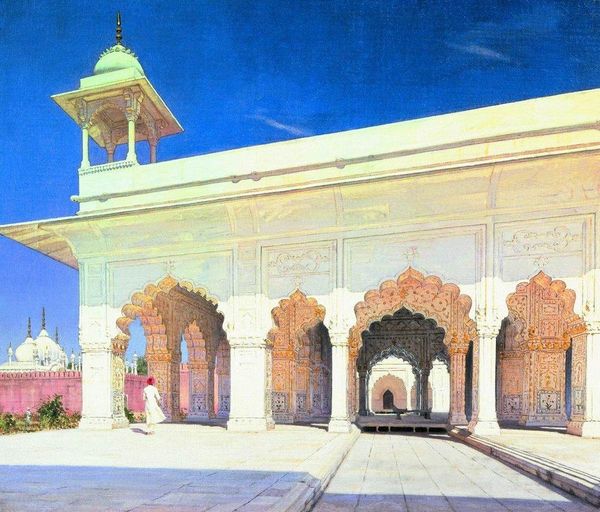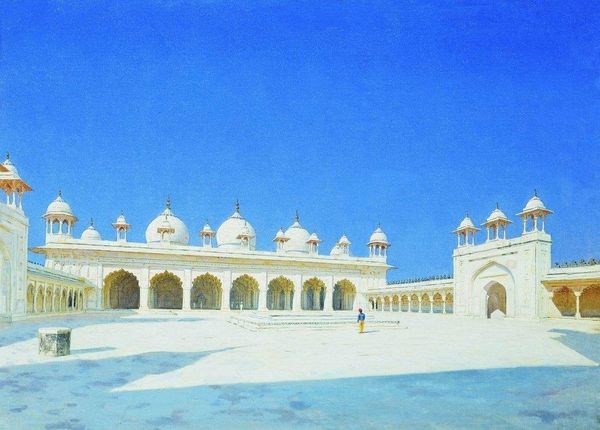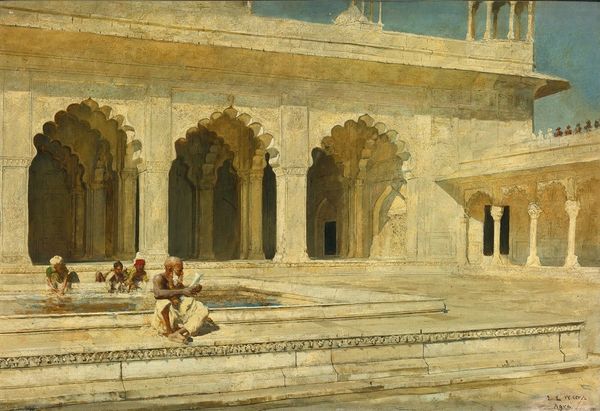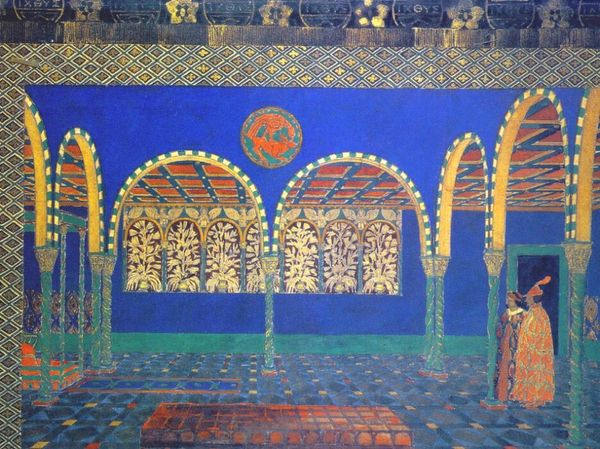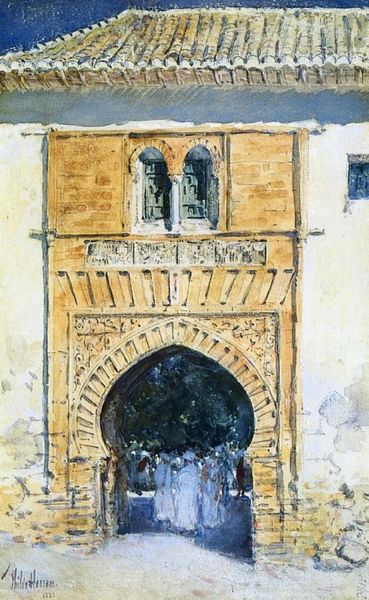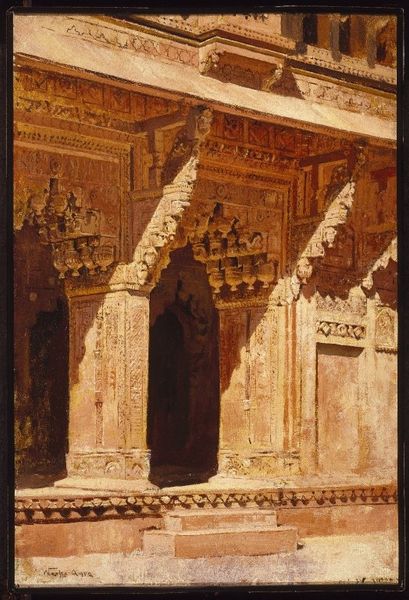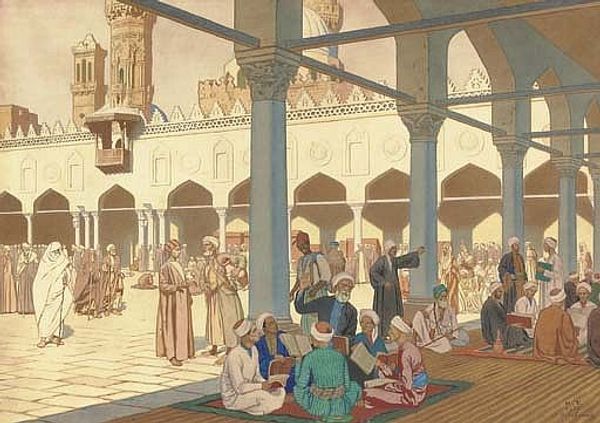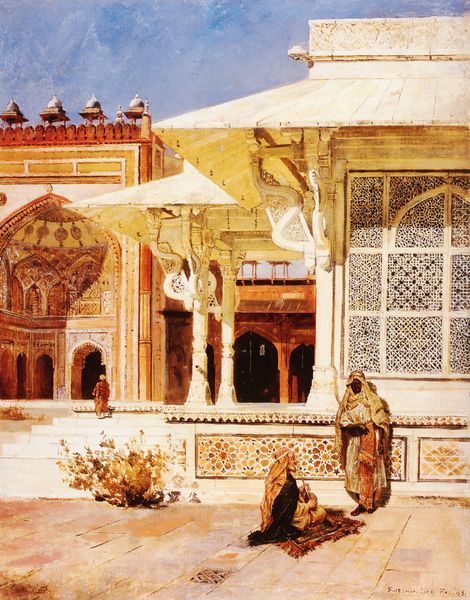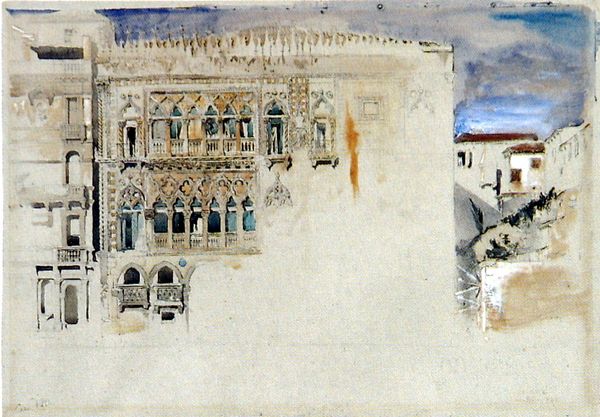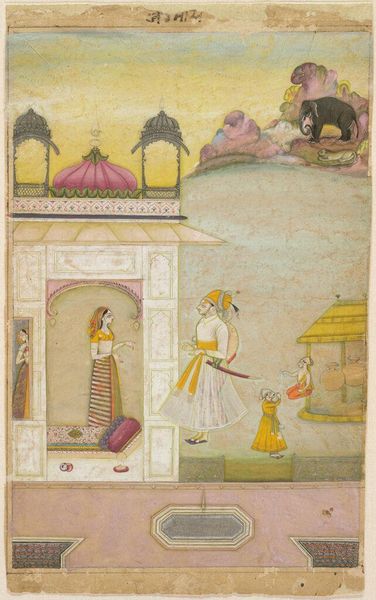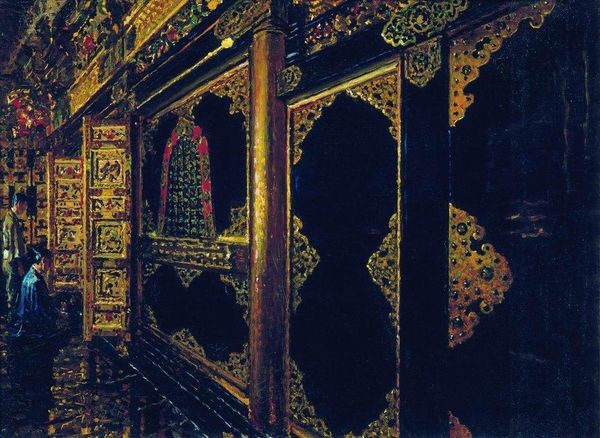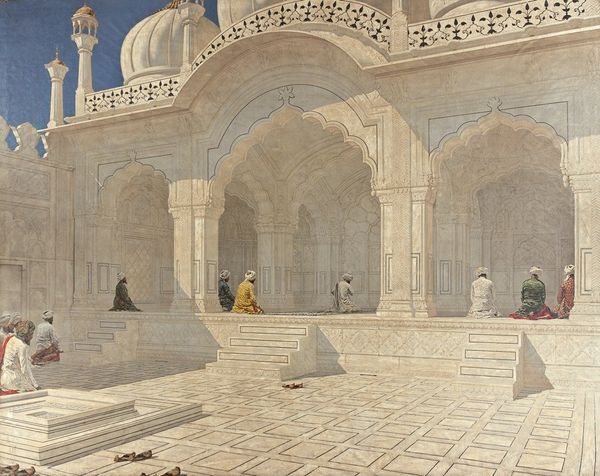
painting, watercolor, architecture
#
portrait
#
painting
#
landscape
#
oil painting
#
watercolor
#
orientalism
#
islamic-art
#
genre-painting
#
history-painting
#
watercolor
#
architecture
Copyright: Public domain
Curator: Vereshchagin's 1876 watercolor, "Tomb of Sheikh Salim Chishti in Fatehpur Sikri," presents us with a captivating slice of colonial India. It immediately strikes me as both grand and serene, a delicate balance. What's your take on it? Editor: The visual organization is quite compelling, with the stark white architecture offset by the vibrant blue sky. The intricate lattice work of the tomb provides a captivating play of light and shadow. I'd say the geometric structures dominate the experience. Curator: The artist was, after all, documenting a powerful Mughal dynasty’s architecture. This tomb, dedicated to a Sufi saint, was and still is a site of pilgrimage. What Vereshchagin captures, through his orientalist lens, is this moment of presumed peace under imperial authority. Editor: Agreed, yet I see also an attention to surface. Look at the contrast between the smoothness of the dome and the detailed filigree of the screens. The subtle gradations in color create depth, making the building seem to shimmer in the Indian light. Curator: Indeed, it’s a work that speaks to the power dynamics of the period, revealing how artistic expression intersects with the politics of empire. The very act of a Russian artist painting this scene for a Western audience highlights a complex network of exchange and observation. Editor: But can we separate the work itself from its context? The careful rendering of texture and light seems paramount. Consider how the repetitive geometric patterns generate an overall sense of harmony, drawing your eye towards the seated figures almost as an afterthought. Curator: I can't deny the craftsmanship, but context enriches our interpretation. Knowing the artist’s background and the political implications makes it even more evocative. Ultimately, it prompts consideration on how the Western world represented the East, with all the attendant assumptions and power dynamics. Editor: Fair enough, and yet, I keep returning to the exquisite rendering. I see this not as a simple record, but as a meditation on the visual relationship between form and light. Curator: It’s a compelling work offering us a window into a world mediated by cultural and historical forces. I leave with a lingering thought on whose story gets told. Editor: For me, I will continue to marvel at the painting itself and the artist’s way to distill a whole world into patterns of color.
Comments
No comments
Be the first to comment and join the conversation on the ultimate creative platform.
